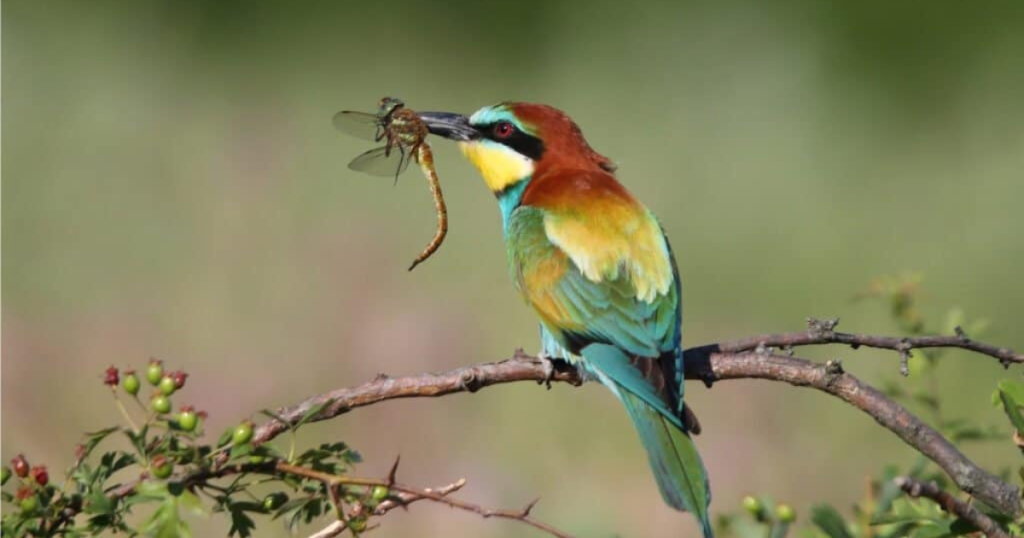Bees are well-known for their important role in pollination and honey production. These tiny, hardworking insects buzz around flowers, ensuring plants grow and reproduce. While they are vital to the environment, bees also face threats from various predators. Have you ever wondered what eats bees? In this blog, we’ll explore the creatures that prey on bees, their hunting techniques, and the impact they have on bee populations.
Why Are Bees Important?
Before we dive into what eats bees, it’s essential to understand why bees are so crucial to nature. Bees are key pollinators, helping plants grow by transferring pollen from one flower to another. This process is vital for the production of fruits, vegetables, and other crops. Without bees, many plants would struggle to reproduce, which would affect the entire ecosystem, including humans.
Who Hunts Bees?
Bees might seem small and harmless, but they have quite a few predators. From birds to insects and even mammals, several creatures depend on bees as part of their diet. Let’s take a closer look at some of the most common bee predators.
- Birds
Many birds are known to eat bees, especially those that rely on insects for their diet. These birds have adapted to catch and eat bees without getting stung.
- Bee-eaters: As their name suggests, bee-eaters are birds that specialize in catching bees. Found mostly in Africa, Asia, and Europe, these birds are fast flyers and skilled hunters. They catch bees mid-air and have a unique way of removing the stinger by rubbing the bee against a branch or hard surface before eating it.
- Swallows: Swallows are another group of birds that catch bees in flight. While they don’t specifically target bees, they feed on various flying insects, including bees, during their hunting trips.
- Woodpeckers: Some woodpeckers will peck into beehives to eat bees and larvae. They are particularly fond of the protein-rich larvae, which serve as an excellent food source.
Wasps And Hornets
Bees and wasps may look similar, but wasps are aggressive predators of bees. Some wasps and hornets hunt bees to feed their young or to take over bee colonies.
- Asian Giant Hornets: Also known as “murder hornets,” these large hornets are a significant threat to bee populations, particularly honeybees. They invade bee colonies, kill the adult bees, and take the larvae back to their nests as food for their young. In large numbers, these hornets can decimate entire hives.
Yellowjackets: These wasps are scavengers and predators, and they will occasionally target bees, especially if they find a weakened hive. Yellowjackets can overpower bees and steal honey or larvae from their hives.
Spiders
Some spiders have developed strategies to catch bees, either by building webs in areas with high bee traffic or by ambushing them directly.
- Orb-weaver Spiders: These spiders build large, sticky webs that are perfect for trapping flying insects like bees. Once a bee flies into the web, the spider quickly immobilizes it with venom and wraps it in silk for later consumption.
- Jumping Spiders: Known for their excellent vision and hunting skills, jumping spiders sometimes target bees. They don’t use webs but instead rely on their ability to pounce on bees from a distance, catching them off guard.
Mammals
Though it might be surprising, some mammals also eat bees or their larvae. These creatures are often more interested in the hives and the honey than the bees themselves.
- Bears: Bears are well-known honey lovers, but they also eat bees and their larvae when they raid hives. The protein-rich larvae are a valuable food source for bears, especially in preparation for hibernation. Their thick fur helps protect them from bee stings, allowing them to dig into hives without much harm.
- Skunks: Skunks are nocturnal mammals that sometimes feed on bees. They scratch at the entrance of beehives and eat the bees as they come out to defend the colony. Skunks are particularly fond of honeybee larvae, which they dig out of hives.
Insects
Several insects prey on bees, either by targeting them directly or by invading their hives.
- Praying Mantises: These predatory insects are ambush hunters. They sit still, waiting for bees or other insects to come close before quickly grabbing them with their strong forelegs. Praying mantises often perch near flowers, making it easy for them to catch unsuspecting bees as they collect nectar.
- Ants: While ants don’t typically hunt adult bees, they are known to invade beehives and eat honey and bee larvae. If a hive is weak or poorly defended, ants can cause significant damage by stealing resources and preying on the young bees.
The Impact On Bee Populations
While bee predators are a natural part of the ecosystem, they can become a threat to bee populations, especially when combined with other factors like habitat loss, pesticide use, and diseases. Some predators, like the Asian giant hornet, can wipe out entire colonies if left unchecked. However, most predators don’t pose a long-term threat to bee populations. In fact, they help maintain balance in the ecosystem by keeping bee numbers in check.
How Do Bees Defend Themselves?
Bees are not entirely defenseless against their predators. They have developed several strategies to protect themselves and their colonies.
- Stingers: Bees use their stingers to defend themselves from predators. While a bee sting can be painful for many animals, it’s often not enough to deter larger predators. Honeybees, for example, die after stinging, making it a last resort defense mechanism.
- Bee Balling: When a hornet or wasp invades a honeybee hive, the bees will sometimes form a “bee ball” around the intruder. They vibrate their wings rapidly, creating heat that can overwhelm and kill the predator.
- Alarm Pheromones: Bees release alarm pheromones when their hive is under attack. This chemical signal alerts other bees in the colony, prompting them to defend the hive against the threat.
Conclusion
Bees may seem vulnerable, but they are part of a complex web of life. While they have many predators, these creatures play a vital role in maintaining the balance of nature. From birds to spiders and even bears, various animals eat bees as part of their natural diet. However, bees have developed their own ways of fighting back and protecting their colonies. By understanding the relationship between bees and their predators, we can appreciate the delicate balance that keeps our ecosystems healthy.






